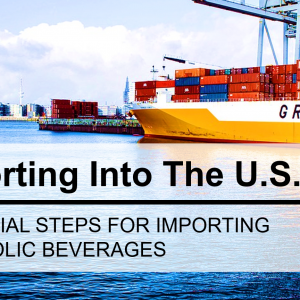Modern supply chains, while exceptionally efficient, are, unfortunately, prone to disruption. While supply chain constraints aren’t new to companies, 2023 has already presented its fair share of supply chain vulnerabilities, instigated and exacerbated by a number of factors.
These factors (even those on a global scale) can be incredibly concerning, especially for small to medium-sized businesses that can’t fall back on the safety net that comes with having the extra resources (and more dollars) that larger enterprises have. However, because smaller businesses are still impacted by what is happening on the wider global scale, they often need to work harder to navigate the same volatile and complex world of supply and trade.
The good news is that there are workarounds and solutions available, which can be an effective component of a supply chain management strategy. They can also help companies edge out their competitors in a highly competitive and price-driven marketplace.
This article will break down the causes of these supply chain constraints and the extent of their disruption while providing tips on how businesses in the beverage industry can plan for and overcome them.
The Challenges of Supply Chains in 2023
Firstly, let’s look at the most prevalent issues facing global supply chains this year.
Inflation
The global cost of living crisis is affecting everybody, with the impact of skyrocketing inflation continuing to be felt. Inflation in the supply chain can cause rippling effects on prices, causing costs to rise, ergo, causing more inflation. Beverage businesses are having to deal with procurement, manufacturing and transportation cost increases, as well as rising energy, wages, and raw material prices, leading to smaller profit margins and, in many cases, lost revenue.
While the impact is felt by the domestic and global beverage companies, as mentioned earlier, it might be the smaller-case business operations that are disproportionately impacted regardless of whether they have international sales or are sourcing directly from an overseas supplier. For example, the war in Ukraine has global repercussions, impacting logistics, driving up the cost of shipping and the price of critical commodities such as aluminum and oil ( a large percentage of which is supplied by both Ukraine and Russia).
Soaring Prices
Covid-19 restrictions incited a surge in international eCommerce, which saw an increased import demand for manufactured consumer goods and raw materials. The demand was so great that it led to a shortage of shipping containers, which instigated a spike in pricing. For small businesses, this rush in online demand outstripped and damaged existing localized supply chains.
Such issues, coupled with the rising costs of energy, fuel, and consumer goods, has forced many businesses to review their cost price and reduce their overheads. For small businesses (as well as larger ones) the effects were felt.
Demand Forecasting
As was expected, Covid-19’s impact damaged many businesses’ ability to forecast accurately, and the Ukraine conflict has not helped matters worldwide. It’s growing increasingly difficult for businesses to decisively balance their inventory and manufacturing needs, given the fluctuations in consumer demand. In addition, the US actually slid out of its Covid restriction into rising inflation and the imminent threat of a recession currently looming over everyone’s heads.
Material Shortages
Surges in consumer demand have led to widespread shortages of many materials. Even now, retailers and suppliers are struggling to meet demand with such scarce product availability. A business’s ability to sustain its growth while meeting consumer demand is to gain access to working capital to weather the dips in off-peak seasons, and prepare for busier ones.
Digital Transformation
Supply chain operations can be significantly enhanced with the help of IoT technology, artificial intelligence and machine learning. The digital solutions available have the potential to change the way in which traditional supply chain processes are approached. That said, there is an underlying challenge in implementing these technologies across a company’s existing estate. The time and cost associated with altering operations to make room for this technology far outweigh the benefits for many companies.
Port Congestion
The pandemic ground many supply chain operations to a halt and those aftereffects are still being felt with huge delays at ports. Congestion occurs whenever ships arrive at ports but cannot unload freight due to the port already being at capacity. Widespread labor shortages and stringent import and export requirements have only added to the backlog and bottlenecks, with many companies unable to meet delivery commitments.
How Are Supply Chain Disruptions Hurting Businesses?
Disruptions to any supply chain components, whether it’s warehousing, inventory, fulfillment, transportation, or procurement, can have a profound impact on how a business operates. Not only do these disruptions cause financial issues, but wider operational problems too. Here are some of the most profound issues that result from supply chain constraints.
- Rising costs of goods and commodities
Supply chain disruptions often lead to the cost of goods soaring higher than expected, in terms of their procurement, production and transportation. While larger businesses often have access to working capital to fund orders, smaller companies aren’t always as fortunate with their cash flow, and often find it difficult to afford these products at their increased costs. In turn, this makes inventories difficult to replenish and takes longer to begin new production lines.
Fractured supply chains often result in further margin pressures, forcing businesses to deliberate between keeping retail prices consistent, reluctantly taking a profit hit from inflated costs, or risking the additional costs that can ultimately result in depressing sales figures.
- Lack of product availability and unreliable supplies
Quite often, disruption in supply chains may eliminate availability of certain products as well as dent the certainty of receiving products on a reliable basis. Many middle and larger-sized companies might not have enough money to invest in sophisticated planning software that can help to avert the crisis, but they can build up their supply chain resiliency and redundancy by working with new suppliers, and diversifying supply chains. Meanwhile, small businesses struggle with fewer resources and even less cash to depend on. There may also be few, if any, opportunities to rely on back-up commodities or diversify ingredients to keep business operations running.
Supplier delays and product shortages often mean that exporters can’t get hold of their products from their manufacturers or suppliers as quickly or easily, which can have a knock-on effect as this means their buyers may have to wait even longer for products. This will subsequently restrict their access to essential capital, which won’t often be received until 90 days after a product shipment.
- Insufficient cash flow
In global and domestic trade, it’s not uncommon to see buyer-supplier relationships fostered on the basis of deferred invoice payment terms of 30-120 days. Many companies have offered this benefit to attract more buyers, but doing so puts them at a cash flow disadvantage. Going months without access to working capital means exporters often struggle to start new production lines, pay their suppliers or staff, or invest in business growth.
Disruptions only worsen the effect of extended periods without access to working capital, particularly if companies cannot fulfill shipments on time, have to wait longer to source materials, or find alternative suppliers. Put simply, when the costs of raw inputs have risen even when the cost to borrow money has increased, the financial pain becomes even greater.
- Uncertainty about the future
The culmination of Covid-19, geopolitical conflicts, sky-high inflation, material shortages, economic instability, and fears of a recession have led to a collective feeling of insecurity among the public. Many foresee imminent closure or having to scale back operations significantly in order to make ends meet. With restrictive budgets and limited resources, small businesses in particular face insurmountable challenges that are hard to overcome.
Despite all of the above constraints, companies can take strategic and methodical precautions to protect themselves and minimize the damage of these disruptions.
Contact a Beverage Specialist Today
5 Ways Companies Can Overcome Supply Chain Disruptions
Here are a few actionable strategies to help businesses navigate these testing times.
AI and Automation Tools
At the heart of many supply chain issues is the ability to get products to consumers efficiently. If any obstacles can be alleviated or avoided entirely in the procurement, production or fulfillment stages, and left in the hands of capable automation tools (driven by artificial intelligence), then this can save companies so much time.
Supply chain management software, inventory and shipping tracking, real-time location systems (RTLS), and many other innovative solutions can help businesses streamline and optimize their production lines. It’s worth exploring where the hold-ups usually occur and finding solutions to make these processes less manual and time-intensive.
Forecast Demand and Inventory
Estimating future consumer demand for products and ordering sufficient inventory will alleviate many of the issues associated with product shortages and delays. When looking at historical data and emerging trends, businesses can anticipate demand – which is helpful during peak seasons like Christmas – and adapt their strategies accordingly. Businesses can invest in tools that make inventory management easier, in turn, avoiding unnecessary spending on products that won’t sell and maximizing warehouse space.
Restructuring
Supply chain disruptions may ultimately force businesses to take drastic measures when it comes to scaling and growth. Operational restructuring is not uncommon, whether it takes the form of reshoring, acquiring legal business licenses in cost-effective locations, changing suppliers or carriers, finding new markets, or changing business processes. Businesses often struggle with deciding the right time to restructure, but doing so can present companies with sufficient long-term benefits.
For instance, acquiring new facilities or equity investments can allow companies to take their exporting operations to the next level, which may only be possible in certain locations with reliable banking infrastructure.
Improve and Maintain Key Supplier Relationships
Many evident supply chain constraints boil down to optimizing operations across all parties in a trade agreement. For some companies, material shortages or delays may not explicitly lie with them, but rather, with their suppliers. For instance, China’s zero-Covid policy may be prohibiting many exporters from selling products in a timely fashion, forcing them to turn to alternative suppliers. Ultimately, diversifying key ingredients and suppliers is key to developing flexibility and building up supply chain assurance for the longer term.
Taking a hard look at your supply chain will help to minimize exposure to supply chain disruption and inflation risks. Measuring the viability of your supply chain might, therefore, boil down to identifying alternative suppliers and diversifying your raw ingredients given the option. For example, there have been times when organic sugar was actually cheaper than commodity sugar.
It’s also always wise to regularly reflect on existing supplier and manufacturer relationships and establish whether they are meeting a business’s short- and long-term needs. If they are not, it may be prudent to explore alternatives on a temporary or permanent basis. Many suppliers are willing to be flexible with contracts, so it’s always worth pursuing alternative firms to offer some more stability and reassurance to your operations.
Enhance Customer Experience
Supply chain disruption is, understandably, a prevalent issue for any company, regardless of the stage in a trade relationship. It’s not uncommon to see many customers express dissatisfaction and frustration with a business’s inability to meet expectations, but efficient and transparent customer service can go a long way in re-establishing trust. Nowadays, a business’s online reputation is worth so much, so it’s worth ensuring that you are not lax when it comes to keeping customers happy, even if problems are out of your hands.
The widespread supply chain problems listed above look to remain a constant source of frustration for companies for the foreseeable future. Despite this, the outlook is somewhat reassuring, with many consumers already aware that these large-scale problems persist. With the help of these proactive solutions, businesses can ensure their reputation remains intact and they can retain that competitive edge in the volatile world of global trade.



